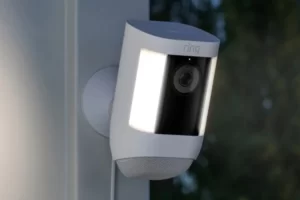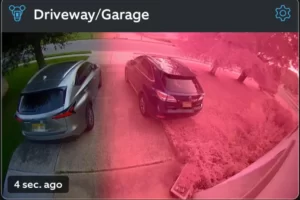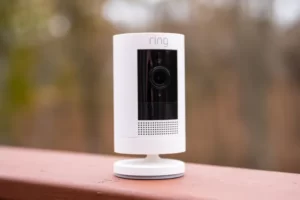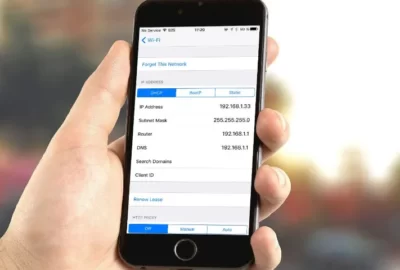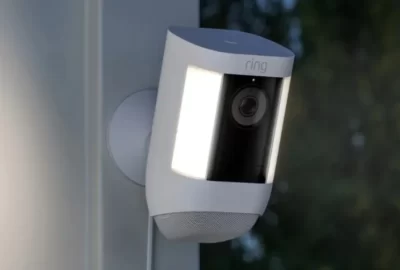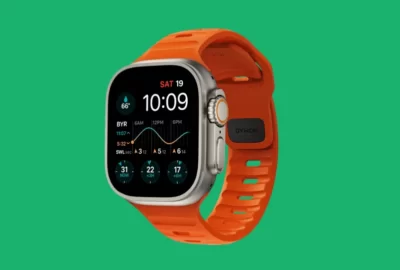Want to be able to detect if a security camera is real and wonder how to spot a fake security camera? Let’s take a look.
As security cameras become more and more popular, the market for fake security cameras also grows. These cameras can be utilized to safeguard your home or place of business, but it’s critical to know the difference between a genuine security camera and a fake one.
Whether you’re looking for ways to find one or you want to learn more about their shortcomings in advance of installing one, there are a few giveaways that, with a little attention, reveal fake security cameras.
What Are Fake Security Cameras?
Fake cams can be used to imitate a real camera, but they are not capable of recording or imaging anything. Also known as dummy cameras or decoy cameras, these fake cameras are not real.
Sometimes, Small shops often can’t afford to buy them, and large malls and buildings cut costs by using a mixture of real and fake cameras.
It can be found in high-traffic areas. They are sometimes used in conjunction with real security cams, but not in the exact same place. As well as saving the building, home owner, or business a ton of money on installation costs, this gives the appearance of comprehensive security.
Also Read:
7 Ways to Detect Fake Security Cameras
Here are the best seven ways How to Detect Fake Security Cameras:
1. Lights
A security camera is probably a fake if it has blinking lights, especially if they are obvious. Because they are intended to draw attention, these lights are the reason why. They are only there to draw attention in the hopes that any potential trespassers will be discouraged.
Genuine units lack blinking lights because doing so defeats the purpose of capturing or processing a security feed.
Infrared technology is used in these devices. The cameras can now record at night thanks to this technology. Because of this, you can tell when a genuine unit is nearby by a faint glow.
Most fake security cameras try to mimic this glow. Sadly, they always go too far. These cameras typically still have extremely bright lights inside. As a result, if the camera you are viewing has bright lights, it is probably fake.
2. Cables
The first easy giveaway is usually the cables that the camera uses.
Genuine cameras have relatively thick cables. As they transmit both data and power to the camera system, these cables must be thick. Additionally, one cable typically serves as both for a specific camera system.

A camera with extremely thin cables is therefore probably a fake. Because they are created to be less expensive, fake security cameras. Since these cables are less expensive, they use thinner cables.
Furthermore, these cables don’t need to do anything because they do nothing. they are relatively thinner as a result.
Additionally, fake security cameras frequently have an excessive number of cables. In general, if it has more than two cables, it is a fake. Additionally, since security cameras with more than two cables tend to be older models, any security camera with more than two cables that appears to be more recent is probably a fake.
3. Swiveling Motion
To create the facade of motion tracking, some fake cameras are designed to swivel. They perform this at regular intervals. In some cases, they act arbitrarily as well. In any case, if the camera swivels, it’s probably a fake. This is due to the fact that cameras with motion tracking capabilities use specialized sensors to track movement, but they are not able to rotate.
However, this does not mean that there aren’t any real cameras that swivel. These cameras do exist, but because it costs money to make the swiveling motion, they are frequently pricey. As a result, if the camera swivels and appears to be reasonably priced, it is probably fake.
4. Wi-Fi Search
If you are looking at a wireless security camera, it is easy to tell whether it is real or fake. Simply move in close proximity to the camera to accomplish this, and then turn on Wi-Fi on your phone. Check out the Wi-Fi signals your phone picks up. Your phone ought to be able to recognize the signal from the camera if it is real. If it is a fake, on the other hand, it won’t appear as a Wi-Fi device.
5. Branding
Brand names are prominently featured on genuine security cameras. This is because the businesses that produce them are incredibly proud of their goods, and advertising themselves in this manner is simple.
If a security camera system does not have any obvious branding, it is likely fake. They probably want to hide their identity, so there’s a good chance of that. Manufacturers of true security cameras frequently refrain from doing this.
A few well-known brands also concentrate on producing cameras. You can complete your work more quickly if you are familiar with them, their logos, and any other pertinent markings. And even if they display a brand name you are not familiar with, all it takes is a quick Google search to determine whether they are real or not.
The best way to identify a fake security camera is probably by using this technique. The only thing you should be aware of is that some producers of fake security cameras try to be cunning by using misspellings of popular brand names or slightly altered logos or markings.
6. Camera Types
Another way to tell the difference between real and fake security cameras is to learn some common fake security camera models.
If you type “fake security cameras” in the search bar on If you search for cameras on Google or Amazon, all the results are either dome cameras or bullet cameras.
It is simple to copy these two models without infringing on anyone’s property rights. In contrast, the majority of wire-free cameras have unique designs that make them more difficult to manufacture.
7. Tracking and Movement
There are many motion-sensing cameras on the market today. These cameras sense motion and can record it. When someone or something is close by, they don’t rotate or move. In an effort to imitate the motion-sensing features of real cams, some of these fake cams will also rotate. Real security cams and motion-sensing cams don’t swivel. Real cameras must wait until the sensor is engaged before beginning to record.
These cames can also record all movements and will not be moved. Fake security cams will record any movements. Motion cannot be tracked by cameras. Therefore, if a camera appears to be moving, it is probably a fake or a dummy security camera.
Read More: How to Tell If a Security Camera is Recording?
Can a Cell Phone Detect a Fake Camera?
There are a number of helpful apps for smartphones that make the claim to be able to find hidden cameras. These work most commonly by using your phone’s camera to search for infrared lights, though some also use the device’s magnetic sensor to detect the presence of a camera.
Either method will reveal whether a camera is fake if it fails to register that the camera being observed is, in fact, a camera.
Using one of these apps can be a great way to tell if a security camera is genuine or fake if you’re unsure.
Different Types of Common Fake Security Cameras
Most counterfeit cameras are either dome-shaped or bullet-shaped. These cameras are easy to counterfeit and are most commonly found at major retailers.
Due to their intricate design and use of challenging-to-copy materials, wireless security cameras can be challenging to counterfeit.
These are the best imitation security cameras.
Wal-Mart Sells Fake Security Cameras
Various affordable and convincing fake security cameras are available at Wal-Mart. The most common security camera is the indoor/outdoor bullet. CCD Camera is printed on the side and there is no brand name on it.
It is possible to identify a fake camera by looking for the absence of infrared light and the brightness of the LED lights. The warning light only flashes at arbitrary times and is not triggered by anything.
Also available are fake dome security cameras. They are a 2-piece set, very reflective, and their flashing red light is not as bright as the real dome cameras. The red blinking light at night is prominent and very visible.
Dummy Arlo Camera Models
These are pricey and are employed to stop people from destroying Arlo sets. They have a plastic-like appearance and have very similar features, but they have different colors.
The side-mounted CCD Camera marking is another obvious giveaway.
As it “disappears into the wall mount”, you won’t be able to see the cable.
You May Also Like:
Final Words on Fake Security Cameras
Even though it isn’t a reliable method, you can tell a real camera from a fake one by the way they are constructed. This occurs frequently since manufacturers always take extra care to make sure that real cameras are constructed with comparatively high-quality materials, regardless of how affordable they may be.
This approach has a drawback in that you must be close enough to the camera to determine whether the construction is of poor quality. While it may work for front door security cameras, it may not be as effective when it comes to cameras that are placed at places that are not easy to reach.
It used to be fairly simple to tell if a security camera was real or fake. There are now a fair amount of good fake cameras. Use these different steps to help you determine whether or not a security camera is real.
Read More:
FAQs
Do Fake Security Cameras Look Real?
At first glance, some fake security cameras do indeed resemble real ones. They function because, in theory, they discourage further inspection because the purpose of them is to deter potential intruders by making CCTV visible. It makes sense that a fake camera will be easier to spot if you can get close, examine the branding (or lack thereof), and hold it in your hands to feel its weight.
How to Make a Security Camera Look Real?
The secret to realism is keeping viewers’ distance from the camera. A good way to do this is to mount the camera on the roof of your house. The cable can be hidden (as one would with a real camera) as another way to increase realism.
Do Fake Security Cameras Have Blinking Red Lights?
In order to imitate the status light of a real security camera, many imitation security cameras have red lights that blink rapidly. IP cameras rarely feature a light that constantly blinks. In the event that they have a status light, it is typically constant or may alternate between green and red to signal different status changes.
How to Tell If a Security Camera is Recording?
Security cameras are recording if they have a light blinking.


